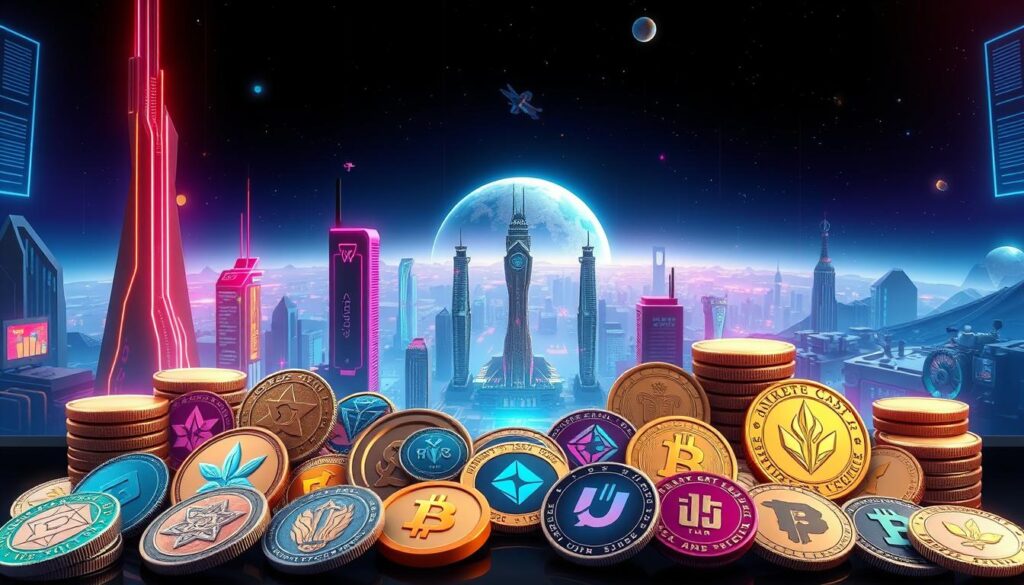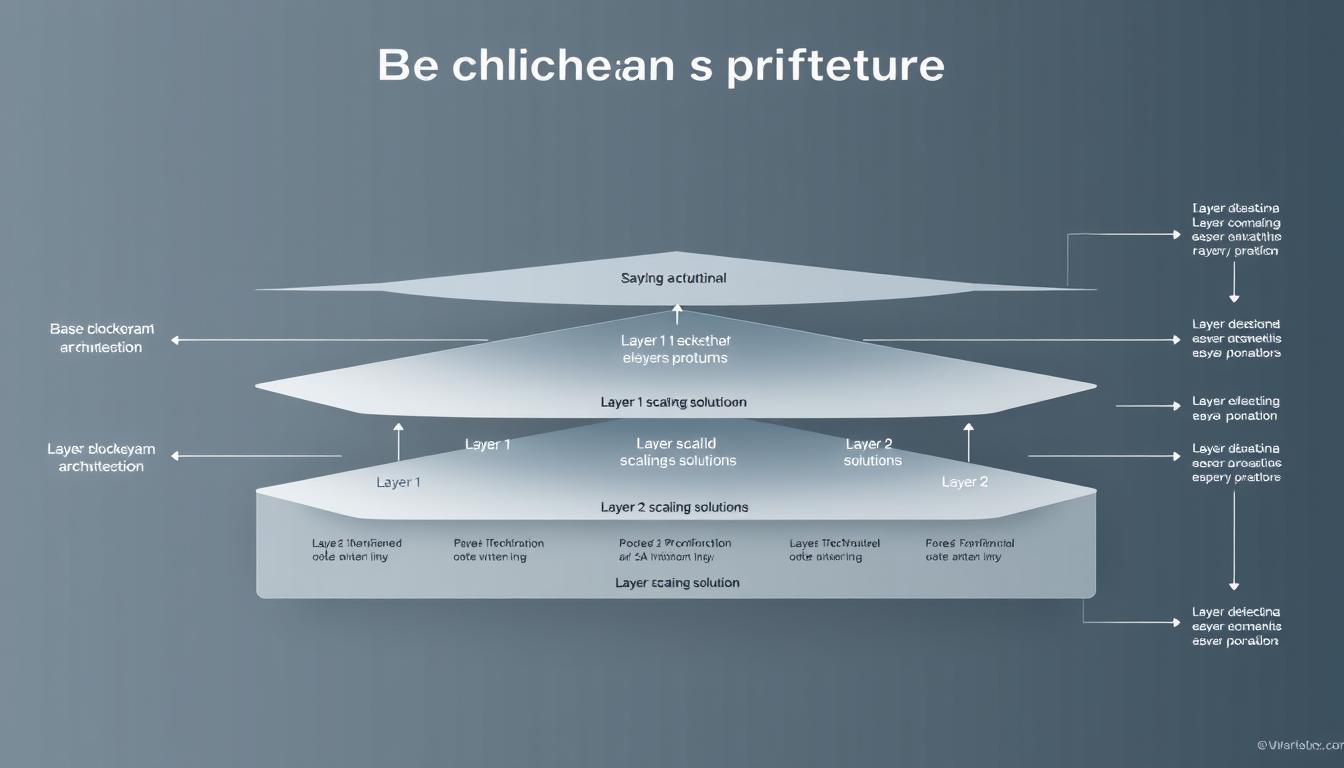Now Reading: Best Play to Earn Crypto Games 2025: Ultimate Guide
- 01
Best Play to Earn Crypto Games 2025: Ultimate Guide
Best Play to Earn Crypto Games 2025: Ultimate Guide

The world of interactive entertainment is changing fast. In 2025, a new model lets participants truly own their digital items. These items can have real-world value.
Blockchain technology powers this shift. It moves beyond old systems where your progress was locked away. Now, your skill and time can lead to tangible rewards.
This sector has seen massive growth. Data from industry leaders like DappRadar shows its rising dominance. It’s no longer a niche experiment but a major part of digital culture.
This guide explores the top titles for the current year. We look at how they work, what you need to start, and their long-term potential. Whether you seek a fun hobby or a serious income stream, understanding these options is key.
We cover the fundamentals of tokenized economies. You will also learn strategies for maximizing your returns. Our goal is to help you make smart choices with your time and resources.
Key Takeaways
- The gaming landscape has evolved, allowing true ownership of digital assets.
- Blockchain technology enables players to earn real value for their in-game efforts.
- The sector has matured, moving beyond early experimental phases.
- These titles combine entertaining mechanics with sustainable economic models.
- Understanding the fundamentals is crucial for both new and experienced participants.
- This guide provides insights into earning mechanisms and risk evaluation.
Introduction and Overview
The landscape of interactive media is undergoing a fundamental shift toward player-centric economies. This transformation allows participants to derive tangible value from their gaming efforts.
Setting the Stage for Play-to-Earn Gaming
Many enthusiasts seek real-world rewards from their digital activities. The play earn model addresses this demand directly. It rewards skill and dedication with cryptocurrency earnings.
Data from DappRadar reveals significant growth in this sector. In 2023, blockchain games showed 34% dominance across the decentralized ecosystem. This demonstrates their powerful appeal to mainstream users.
Why 2025 Is a Pivotal Year for Crypto Games
The industry has matured beyond experimental phases. Sustainable economic models now balance entertainment with genuine earning potential. This evolution benefits millions of active players worldwide.
New titles launch regularly with innovative mechanics. Each offers unique opportunities for participants to engage and prosper. The sector’s rapid expansion shows no signs of slowing.
| Year | Blockchain Gaming Dominance | New Wallet Creation Driver | Player Participation Trend |
|---|---|---|---|
| 2022 | ~50% of blockchain activity | Emerging force | Early adoption phase |
| 2023 | 34% industry dominance | Strongest driver | Rapid growth |
| 2025 Projection | Expanding rapidly | Primary attraction | Mainstream integration |
Understanding Play-to-Earn Games and Blockchain Gaming
At the heart of the modern gaming revolution lies a powerful new concept: verifiable digital ownership. This model fundamentally changes the relationship between participants and the virtual worlds they explore.
How Blockchain Technology Empowers Gamers
Blockchain technology acts as a public ledger that records every transaction. This creates a transparent and secure environment for all participants. Your achievements and items become immutable digital assets.
This system moves control from a central company to the individual. Players hold their items in personal digital wallets. This grants true ownership, allowing assets to be traded or sold freely.
The Role of NFTs in Digital Ownership
NFTs are unique tokens that represent ownership of a specific item. In a game, an NFT can be a character, a weapon, or a piece of land. Each one has distinct properties and a verifiable history on the blockchain.
This technology ensures that no two digital assets are exactly alike. Scarcity and provenance are built-in features. This creates a vibrant economy where players drive the value of their collections.
| Feature | Traditional Gaming | Blockchain Gaming |
|---|---|---|
| Asset Ownership | Controlled by the publisher | Held by the player |
| Item Transferability | Usually restricted within the game | Freely tradable on open markets |
| Underlying Technology | Centralized servers | Decentralized blockchain |
Key Benefits of Play-to-Earn Games
Player empowerment through verifiable asset control defines the new era of gaming experiences. This model transforms how participants interact with digital worlds.
Ownership and True Asset Control
Traditional systems limited what participants could do with their digital items. Blockchain technology changes this completely. Players now maintain full control over their earned assets.
This ownership extends beyond a single platform. Digital items can move across different gaming environments. The freedom to use, sell, or trade creates real value for dedicated participants.
Enhanced Trading and Safe Transactions
Secure exchanges represent another major advantage. Smart contracts automatically verify every transaction detail. This eliminates risks associated with unverified sellers.
The system ensures authenticity of all digital items. Each trade executes only after proper verification. This security builds trust within the gaming community.
| Feature | Traditional Gaming | Blockchain Gaming |
|---|---|---|
| Asset Ownership | Limited by publisher terms | Full player control |
| Item Transferability | Restricted to game ecosystem | Cross-platform capability |
| Transaction Security | Centralized verification | Automated smart contracts |
| Asset Authenticity | Potential for duplication | Verifiable uniqueness |
Deep Dive into the Best Play to Earn Crypto Games 2025
The current year presents a diverse array of titles that demonstrate the maturity of this sector. Each offers a unique blend of engaging mechanics and economic potential for participants.

Exploring Top-Rated Titles and Their Unique Features
Axie Infinity continues to lead the field with its robust economy. It focuses on collecting, breeding, and battling unique NFT creatures. This title maintains a massive and active community.
The Sandbox empowers users to create their own experiences. It is a user-generated metaverse built on LAND parcels. Creators can design games and sell voxel assets on its marketplace.
For a more relaxed pace, Farmers World on the WAX blockchain simulates agricultural life. Participants manage NFT land, animals, and resource tokens. Its gameplay attracts a dedicated global audience.
Alien Worlds offers a free-to-enter social metaverse. Players mine for tokens across six distinct planetary worlds. This model provides accessibility without an initial investment.
Upland mirrors real-world property ownership on the EOS blockchain. Users buy and trade virtual replicas of real U.S. city properties. It combines collecting with strategic business development.
Other notable entries include Illuvium with its AAA-quality open world and Big Time‘s fast-paced MMORPG action. Gods Unchained stands out in the digital card game genre by granting full ownership of assets. These titles highlight the innovative features available to players today.
How NFT Technology is Revolutionizing In-Game Assets
The relationship between creators and consumers is evolving through tokenized digital property rights. Non-fungible tokens create unprecedented opportunities for true ownership in virtual worlds.
Verifying and Securing Digital Items via Smart Contracts
Smart contracts automate the verification process for every transaction. They check ownership records and item values before executing trades. This system ensures security and authenticity for all participants.
Games like Illuvium implement gas-free transactions while maintaining Ethereum-level security. This removes technical barriers that previously limited casual gamers. The verification process gives players confidence when interacting with genuine users.
| Feature | Traditional Assets | NFT-Based Assets |
|---|---|---|
| Ownership Verification | Centralized database | Smart contract automation |
| Cross-Platform Use | Platform-locked | Interoperable across games |
| Transaction Security | Manual verification | Automated smart contracts |
| Asset Transfer | Restricted by publishers | Player-controlled transfers |
Boosting Player Engagement with Unique NFTs
Each NFT carries distinct attributes that influence its value and performance. Rarity levels and special characteristics make every digital item unique. This personalization deepens player investment in their collections.
Ownership extends beyond simple possession. NFT holders can host events and contribute to game development. This collaborative approach transforms players into active participants in the blockchain gaming community.
Advanced NFT technology continues evolving with dynamic attributes. Programmable behaviors make gaming experiences more immersive. Players can transfer their assets between different platforms, creating interconnected ecosystems.
Play-to-Earn Game Mechanics: Tokenomics and Earning Models
Token-based economies represent a fundamental shift in how participants interact with digital worlds. These systems create sustainable environments where effort translates into tangible value.

Understanding these economic structures helps players maximize their engagement. Different approaches cater to various participation levels and investment preferences.
Free-to-Play vs. Play-to-Earn Modes
Most blockchain titles offer two distinct participation methods. Free-to-play options allow entry without financial commitment but provide limited rewards.
Play-to-earn models require initial asset acquisition but offer greater earning potential. These systems typically involve NFT ownership and active participation in the ecosystem.
Many developers now blend both approaches within single platforms. This flexibility accommodates casual enthusiasts and serious participants alike.
Earning Streams: Quests, Tournaments, and Staking
Multiple revenue generation methods exist within these digital economies. Completing quests and challenges provides consistent token rewards for active players.
Competitive tournaments offer higher potential returns for skilled participants. Staking mechanisms allow token holders to earn passive income through platform participation.
Advanced players often diversify across several earning streams. This strategy maximizes overall returns while managing risk exposure.
Overview of Top Blockchain Platforms for Crypto Gaming
The underlying blockchain platform is a critical factor influencing the performance and accessibility of any digital title. Different networks offer unique advantages in speed, cost, and security.
Choosing the right foundation shapes the entire user experience. This section explores the leading technological backbones powering today’s most popular interactive experiences.
Comparison of Ethereum, Polygon, and Immutable X
Ethereum remains the most established network for digital assets. It boasts the largest developer community and robust security. However, its mainnet can have high transaction fees.
This has led to the rise of Layer 2 solutions. Polygon provides a popular alternative with low costs and high throughput. It is ideal for experiences requiring frequent player interactions.
Immutable X has emerged as a preferred platform for high-quality titles. It offers instant, gas-free NFT trading. This is achieved through advanced zero-knowledge rollup technology.
Other specialized networks also play vital roles. The Ronin blockchain was built specifically for gaming, optimizing the player experience. Solana excels with high-speed processing for real-time applications.
WAX and Hive offer low-cost infrastructures, making them accessible to a broad audience. Cross-chain compatibility is also an important trend, providing players with more flexibility.
| Platform | Primary Advantage | Example Title | Transaction Model |
|---|---|---|---|
| Ethereum | Established security & ecosystem | The Sandbox | Can have high gas fees |
| Polygon | Low cost & high throughput | Various titles | Layer 2 scaling |
| Immutable X | Gas-free NFT trading | Illuvium | Zero-knowledge rollups |
| Solana | High-speed processing | Star Atlas | Low fees, fast finality |
| Ronin | Gaming-optimized | Axie Infinity | Custom sidechain |
In-Game Currencies and Governance Tokens Explained
A sophisticated dual-token system forms the economic backbone of many modern interactive platforms. This structure clearly separates daily activities from long-term project direction.
It empowers the community by distributing influence. This approach moves control away from a single central authority.

Understanding Native Tokens and Their Utilities
Most platforms utilize two distinct types of tokens. The first is an in-game or utility token. Players use this for actions like upgrading characters or buying items.
The second type is a governance token. This grants holders voting rights on future development. It represents a stake in the platform’s ecosystem.
This model balances rewards for active players with influence for long-term supporters. The utility of each token is carefully designed.
- Utility Tokens: Power the in-game economy (e.g., SLP in Axie Infinity, FOOD in Farmers World).
- Governance Tokens: Enable voting on proposals (e.g., AXS in Axie Infinity, SAND in The Sandbox).
These digital assets often hold real-world value. Many tokens can be traded on external exchanges. This creates a tangible link between virtual effort and external value.
User Experience in Blockchain Gaming: Community and Innovation
The social fabric of interactive entertainment is being rewoven by community-driven experiences. This shift places collective engagement at the center of the player’s journey.
These platforms foster deep connections among participants. The overall experience becomes richer through shared goals and collaboration.
Building Communities and Collaborative Gaming
Strong social bonds form the foundation of many successful virtual worlds. Players naturally gather to share strategies and support newcomers.
Community-led guilds represent a professional layer within this ecosystem. They pool resources and optimize collective potential. This collaborative spirit enhances the gaming experience for everyone involved.
Developers also benefit from these engaged communities. They can create sustainable business models fueled by active participation. The growth of the game world becomes a shared endeavor.
Innovative Features and Cross-Platform Play
Technological innovation continues to push boundaries. The integration of augmented reality with digital assets is one exciting frontier. This blend makes the virtual world feel more tangible.
Mobile accessibility is another key development. It brings these experiences to a wider audience of players. Convenience and flexibility are major advantages.
Perhaps the most significant innovation is cross-platform interoperability. Players can use their digital items across different gaming environments. This breaks down traditional barriers between platforms.
Many titles now offer a blend of free access and reward-based modes. This approach caters to diverse player preferences within a single game world.
Expert Strategies to Maximize Earnings in Crypto Games
Mastering advanced techniques separates casual participants from serious earners in virtual worlds. These methods go beyond basic participation and require strategic thinking.

Successful players often combine multiple approaches to create diverse income streams. This reduces risk while maximizing overall returns from their digital activities.
NFT Trading, Renting, and Flipping for Profit
Asset trading represents a sophisticated way to generate significant value. Players can purchase digital items at low prices and sell them after improvement.
This approach requires market knowledge and timing skills. Understanding rarity mechanics helps identify undervalued assets with growth potential.
Renting valuable NFTs to other participants creates passive income streams. Owners receive a percentage of rewards earned by borrowers during gameplay.
Staking and Yield Farming Opportunities
Token staking allows holders to earn rewards through long-term ecosystem participation. This method requires minimal active time commitment.
Platforms like Illuvium distribute ILV tokens to supporters who lock their assets. This creates stable returns while supporting project development.
Diversifying across different strategies helps manage risk. Combining active trading with passive methods optimizes overall earning potential.
Evaluating Risks and Investment Potential in Crypto Gaming
While the potential for earning is significant, participants must carefully assess the risks involved in blockchain gaming. Understanding these challenges helps players make informed decisions about their participation.
Market Volatility and Entry Barriers
Market fluctuations represent the most immediate concern for participants. Token values can change rapidly based on broader economic conditions. This volatility directly impacts daily earnings for players.
Many platforms require substantial upfront capital. Some titles demand $500 or more for essential tools and tokens. This creates financial obstacles for new participants.
Token utility issues affect long-term sustainability. Certain games feature currencies with limited redemption options. This restricts their real-world value proposition.
Player retention challenges exist in some ecosystems. Games relying on continuous growth face sustainability risks. Declining interest can create negative feedback loops.
Complex creation tools require significant learning time. Mastering platforms like The Sandbox demands dedication. This can overwhelm casual participants.
Security concerns include automated purchasing bots. These disrupt fair market conditions for legitimate players. Risk management principles apply just like traditional investing.
Conclusion
The fusion of entertainment and financial opportunity has reached a pivotal moment in digital experiences. Modern blockchain gaming offers diverse pathways for participants to engage with virtual worlds while generating real value.
This sector has evolved beyond experimental phases, providing sustainable economies across various genres. From strategic cards competitions to immersive virtual environments, there are options for every type of enthusiast. Developers continue refining their tools and platforms to enhance user experiences.
Players should approach these opportunities with careful consideration of market dynamics and personal investment capacity. The most successful experiences balance engaging mechanics with rewarding economic models.
As the industry matures, it creates unprecedented connections between interactive entertainment and digital cryptocurrencies. Understanding both the potential and challenges enables informed participation in this evolving landscape.
FAQ
What exactly are play-to-earn games?
Play-to-earn games are a new type of gaming built on blockchain technology. They allow players to truly own their in-game items, often as NFTs. By playing, completing quests, and participating in the game’s world, you can earn valuable cryptocurrencies and other digital assets.
How do I start playing these games? Do I need a big investment?
Many top titles offer free-to-play modes, letting you start without any upfront cost. You can begin earning by spending time in the game. Some games may require an initial purchase of an NFT character or item to unlock higher earning potential, but affordable entry points are common.
Are the items I earn really mine to keep and sell?
Yes, that’s a core benefit. When you earn an NFT asset—like a character, weapon, or piece of virtual land—you have full ownership. You can trade it on marketplaces, sell it to other players, or use it across different games that support the same blockchain standards.
Which blockchain platforms are best for gaming in 2025?
Platforms like Polygon, Immutable X, and Solana are leading choices due to their low transaction fees and fast speeds, which are crucial for smooth gameplay. While Ethereum remains a major player, these other networks are often preferred for a better user experience.
What are the main risks involved with play-to-earn gaming?
The primary risks include market volatility, as the value of earned tokens and NFTs can fluctuate. There’s also the potential for project failure. It’s important to research a game’s developers, tokenomics, and community before making any significant investment of time or money.
Can I make a sustainable income from these games?
While some players do generate significant income, it often requires a strategic approach. This includes mastering gameplay, smart NFT trading, and understanding the game’s economy. For most, it’s a way to earn rewards for time spent gaming, rather than a full-time income.















